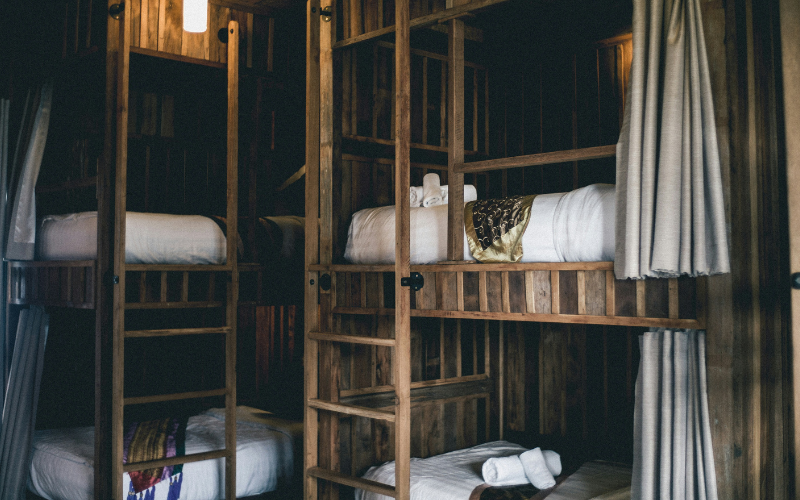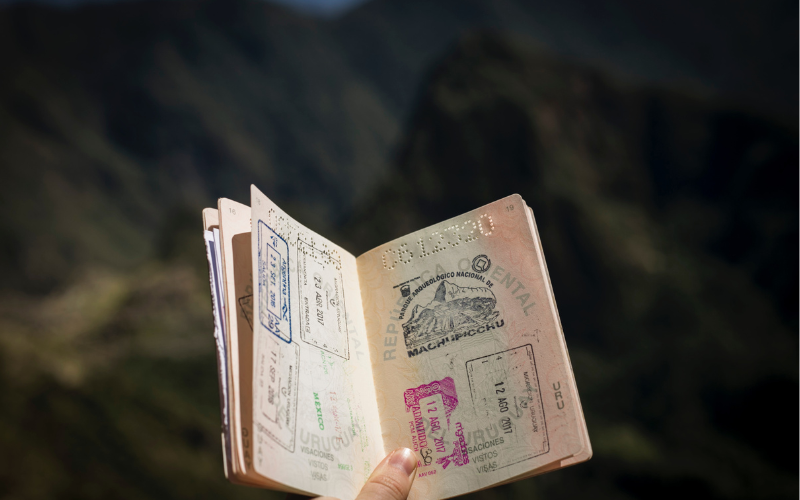The first hostel officially opened in 1912, in what is now Western Germany. Since then, the evolution of hostels has been remarkable. Germany, and Europe especially, has remained a hotbed for hostels. Here in the States, many things are similar to how things run overseas, while some are different.
I sat down with Mike from the Bay area, to pick his brains on what it has been like traveling the world and staying in hostels around the globe for the last 40 years.

The Evolution of Hostels
First and foremost, hosteling was more difficult back then. Mike started staying in hostels in the 1980s, at first while backpacking through Europe. He was quick to say that the technology and information that is out there today has made backpacking and hosteling tremendously easier.
“Back then, you had encyclopedias and dictionaries. Everyone was using Fodor’s Travel Books (today’s equivalent of Lonely Planet),” says Mike. The evolution of cell phones and GPS over the years has led to less guesswork, and thus, a smoother experience. A more approachable way of getting around has attracted all types of travelers.
“Women, too, very rarely traveled alone. It was often groups, not as much solo travel as you see today,” says Mike. In hostels, the community aspect is one of the most valuable things among travelers. You’re apt to find people, in any hostel in any city, congregating in common areas or cooking dinner together. This is one of the things that make hosteling so rewarding.
Less Work, More Play
How one experiences a hostel, also, has changed. Back in the day, hostels asked their guests for a few hours of work a day, in order to keep the space clean and tidy. This meant cleaning the kitchen or even scrubbing toilets and tidying the bathrooms. Today, hostel volunteers or staff workers handle that side of things. But the fact that it began in a way that served the same community it hosted just goes to show that one thing remains the same: hostels thrive on community. Without that sense of community, a traveler might feel like they’re staying in a hotel.
Young or old, inexperienced or seasoned, the fellow travelers you’ll meet in a hostel will tell you one thing: they meet more people in hostels than they would while staying in a hotel or bed and breakfast.

Location, Location, Location
It also helps that nowadays most hostels are located in central locations. Back when Mike was traveling the world in hostels, their locations were often far away and inconvenient when it came to exploring metropolitan areas. “You’d usually have to take a back alley or bust out a map in order to find your hostel. They were not near city centers. They were also usually in disrepair and very basic.”
On the other hand, back then you could find a room for around $5. Even still, today hostels remain one of the best options for balancing a budget while you’re traveling. For as much as has changed, in terms of how they are set up and the amenities offered, hostels offer many advantages to travelers.
If you haven’t stayed in a hostel before, or are interested in visiting a city across the globe, we strongly recommend booking one night and seeing how you enjoy the experience!
Want more insight on what it’s like to travel in hostels these days? Check out this video!



